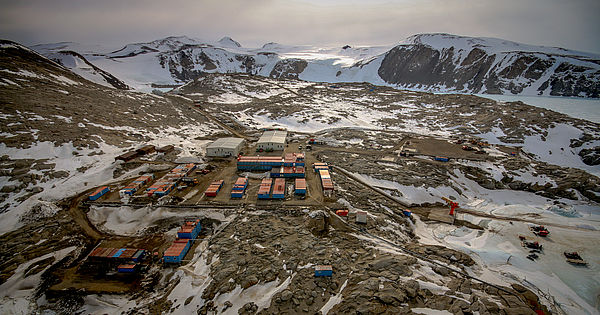
Background
Stazione Mario Zucchelli | |
Antarctic | |
Open | |
Station | |
Italy | |
None | |
1986 | |
Seasonal |
Introduction
Stazione Mario Zucchelli, ENEA | |
Mario Zucchelli station (MZS) is located in the Ross Sea area, in the Victoria Land, at the foot of small range called Northern Foothills. MZS is a costal station built on a granite promontory overlooking the Gerlache Inlet, within the wider Terra Nova Bay. | |
MZS is located in the Northern Foothills, an ice-marginal, high latitude periglacial environment covered only by local glaciers and snowfields. The area, characterized by Adélie and Emperor penguin colonies and Skua colonies (at Edmonson Point, Cape Washington, Adelie Cove and Inexpressible Island), hosts some marine and terrestrial protected areas (ASPA161, 118 and 173). The fauna comprises also other species of seabirds (Snow and Wilson’s Storm petrel), seals (Leopard and Weddell seal) and whales (Killer, Antarctic minke and Arnoux’s beaked whale).
Furthermore Wood Bay and Terra Nova Bay are among the most biologically and ecologically diverse areas in Antarctica with many species of bryophytes, lichens, algae, cyanobacteria and invertebrates. The vegetation of Victoria Land is entirely cryptogamic and vascular plants are absent.
| |
The site for the permanent Italian station, built in 1986, is Terra Nova Bay between Cape Washington and the Drygalski Ice Tongue, along the coast of Northern Victoria Land. The station was called Baia Terra Nova until 2004. The station is built right on the shore, on a granite rocky peninsula with a north-south orientation. The area assigned to the buildings provides easy access from/to the sea from both east and west. The small inlet on the east shore is particularly suited for unloading cargo at the beginning of the season, when the sea is totally covered with ice. The fast-ice in Tethys Bay is used at the beginning
of the season as an aircraft landing place. The main facilities are runways, helipads, plants (power production, incinerator, waste water treatment, desalinator, liquefier), fuel storage and acquarium.
| |
Terra Nova Bay area has been widely scientifically investigated in the last 32 years, through extensive geological, oceanographic, marine, ecological and biological research. Marine biological research activities were carried out in the area during the austral summers since the early 1990s including fish community dynamics (in particular the Silver fish). Since 1987, the Meteo-Climatological Observatory of the Piano Nazionale di Ricerche in Antartide (PNRA) has collected meteorological data by means of several automatic weather stations (over 30 at present) installed in the Victoria Land region. Measurements of the size of Adélie penguin colonies of the southern Ross Sea since 1984 are among the longest biologic time series in Antarctica. At Boulder Clay, since 2000, an automatic station (CALM protocol grid) is monitoring the permafrost thermal regime. | |
MZS is a summer science station. It also acts as logistic base to support the Concordia inland station. Its population is of about 90 people, shared between scientists and logistics. From MZS are managed air and marine operations. By means of air operations from the base are supported also satellites scientific camps in a range up to 400 km. MZS is equipped with all the basic facilities for an stand alone station of its size. They include power generation, water production, waste water treatment plant, waste incinerator, medical facility, kitchen, workshops, science laboratories. | |
MZS is opened every new summer season by a team of 20 people which are moved from Christchrch (NZ) via McMurdo with the support of the United States Antarctic Program. In the very first part of each season (late October-November) an airstrip is realized on the sea ice. On this ice runway lands an average of 8 flights intercontinental per season departing from Christchurch. These flights last 7 hours and they carry passengers and freights. Other people are moved, via sea or air, by means of agreements with other programs (American, French, New Zealander, Korean, Australian). Every other year the italian program charter a ship which carries fuel, passengers and freigths. The ship takes a week for the voyage from New Zealand to Antarctica. The ship usually arrives in Antarctica at mid January and she departs at mid February. In the time in between she carries out oceanographic campaigns in the Ross Sea. |
Operator
Programma Nazionale di Ricerche in Antartide | |
Government | |
ENEA (Italian National Agency for New Technologies, Energy and Sustainable Economic Development) |
Data Source
0000-00-00 |
Partner Institution
No |
Location
CO1401 | |
74° 41.6884' 0'' S | |
164° 6.7961' 0'' E | |
Continental Antarctica | |
U - North Victoria Land geologic | |
8 North Victoria Land | |
15 | |
0 | |
4000 | |
3200 | |
3200 | |
0 | |
10 | |
Ice-free ground |
Climate
Continuous | |
Coastal Antarctica | |
Snow | |
22 | |
243 | |
W | |
01/01/1987 to 28/01/2016 | |
-14 | |
-1 | |
-7 | |
-14 | |
-19 | |
-20 | |
-20 | |
-22 | |
-21 | |
-19 | |
-15 | |
-7 | |
-1 | |
11/01/2002 | |
11 | |
21/07/2004 | |
-39 | |
December | |
December | |
None | |
January; December |
Features
Blue ice; Bluff; Clear air zone; Coast; Crevasse; High elevation; Hill; Ice shelf; Ice tongue; Lake; Low artificial light pollution; Low humidity; Melt streams; Moraine; Mountain; Nunatak; Permanent snowpatches; Plateau; Rock; Sea; Sea ice; Seal colonies; Shoreline; Snow; Terrestrial geothermal; Valley |
Disciplines
Astrophysics; Atmospheric sciences; Climate studies; Ecology; Environmental sciences; Fisheries management; Geology; Geomorphology; Geophysics and seismology; Glaciology; Limnology; Mapping; Marine biology; Medicine; Microbiology; Oceanography; Paleobiology; Paleontology; Soil biology |
Human Activities
No | |
None | |
Yes | |
Yes | |
Yes | |
Yes |
Infrastructure
CO1401 | |
7500 | |
2400 | |
Biology; Chemistry; Geology; Geophysics; Scientific diving | |
Glaciology; Geomagnetism; Gravimetry; Seismology; Climate; Astrophysic; Ionosphere; Geodesy | |
100 | |
5100 | |
124 | |
yes | |
yes | |
Fossil fuel | |
380 | |
24 | |
yes |
Staff Capacity
80 | |
40 | |
0 | |
0 | |
120 | |
0 |
Scientific Equipment
The station has several research facilities that include helicopters, boats (a 15 m oceanographic vessel and six rubber-dinghies) and terrestrial cross-country vehicles (mainly as support of scientific activities in remote areas), common laboratories. | |
Along with helicopter and airplane services for remote field research, in MZS during the summer campaign a diving research service is available as well, allowed by the regular presence on field of professional divers. For this purpose a hyperbaric chamber is available at MZS. | |
Long-term monitoring and observations consist of: five year-round automatic observatories (geomagnetism, ionosphere, seismology, space weather and surface radiative fluxes), the Meteo-climatic PNRA AWS network (since 1987), the permafrost active layer monitoring CALM grid. |
Medical Facilities
Yes | |
60 | |
Medical doctor; Nurse | |
1 | |
Basic; Dental; Surgery | |
Anaesthesia; Diagnostic ultrasound; Diagnostic x-ray; Hyperbaric Recompression Chamber; Laboratory diagnostics; Ophthalmology; Telemedicine | |
Surgical theatre; Traumatology; portable field x-ray | |
3500 | |
3 | |
0 | |
360 | |
3500 | |
Defibrillator; Automatic ventilator; Ambulance; ECG | |
No | |
Yes |
Vehicles
“Malippo” 15 m alluminium boat; “Skua” 14 m boat; four Zodiac rubber boats. | |
Ten pickup trucks, one minibus, six quad bikes, eight skidoos, snow groomer. |
Workshop facilities
ICTS (Staff available to assit with constructions); Mechanical; Metal workshop; Plexiglas workshop; Wood workshop | |
Electrical; welding; |
Communications
Computer; E-mail; Fax; Internet; Printer; Satellite phone; Scanner; Telephone; VHF |
Access
Air; Sea |
Aircraft landing facilities
4 | |
3000 | |
70 | |
The longest runway is on the sea ice and it is suitable for intercontinental wheeled aircraft, it lasts just November. The others airstrips are skiways on snow, they are suitable for continental ski aircraft. Each of them is used in different period of the season and/or from different size of aircraft. | |
Sea ice | |
Snow | |
Yes |
Transport and freight
Airplane; Helicopter; Ship | |
1 | |
January | |
Pier/Jetty | |
20 | |
January; February; October; November; December |
Access To The Facility
Pictures
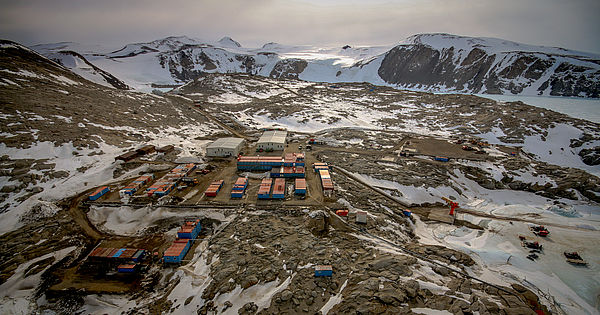 MZS aerial (Credits: Nicklen) |
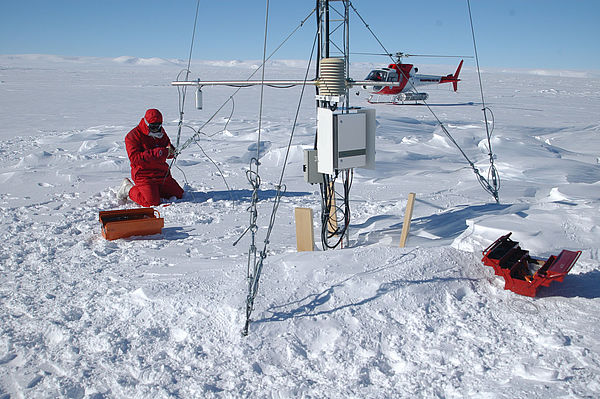 MZS meteo. |
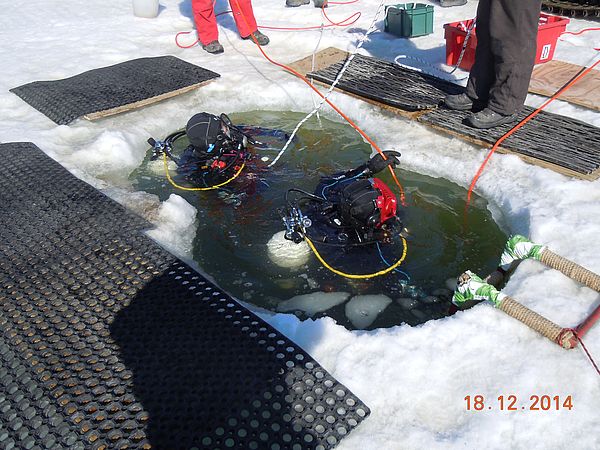 MZS scuba pnra |
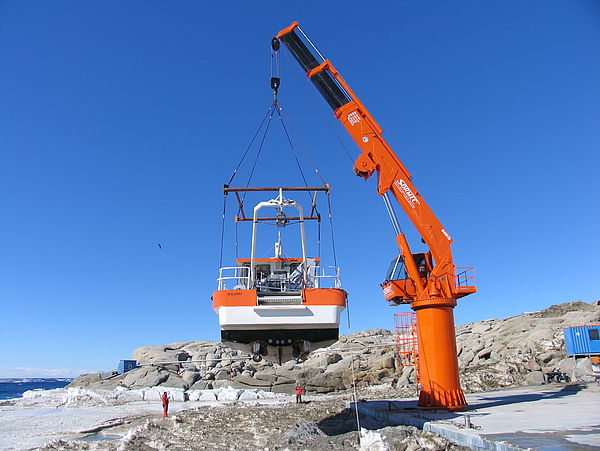 MZS crane. |
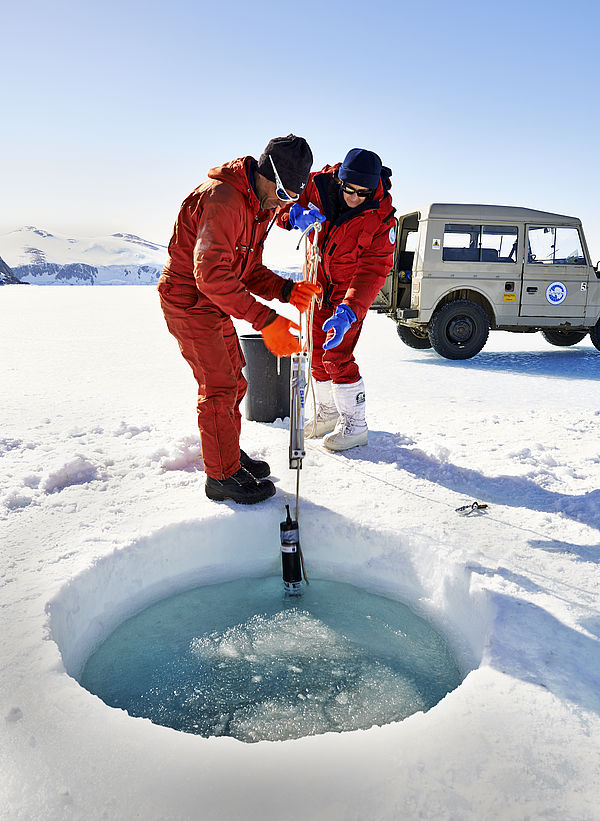 MZS hole (Credits: Sacchetti) |
 MZS italica. |
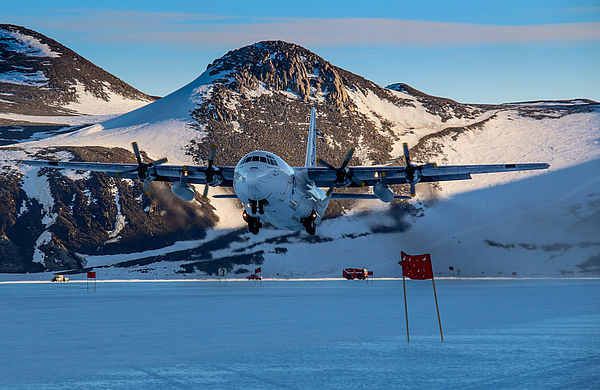 |
 |
 |
 |
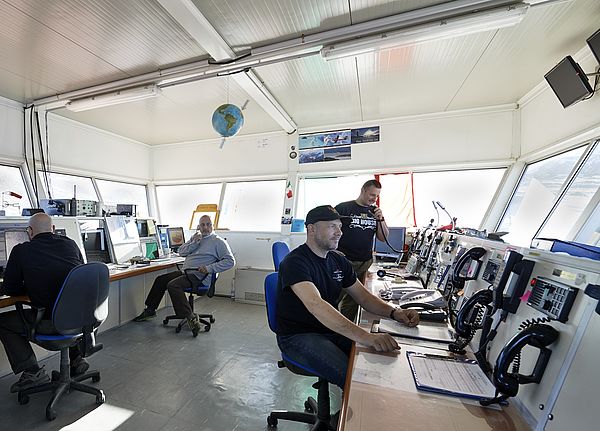 |
